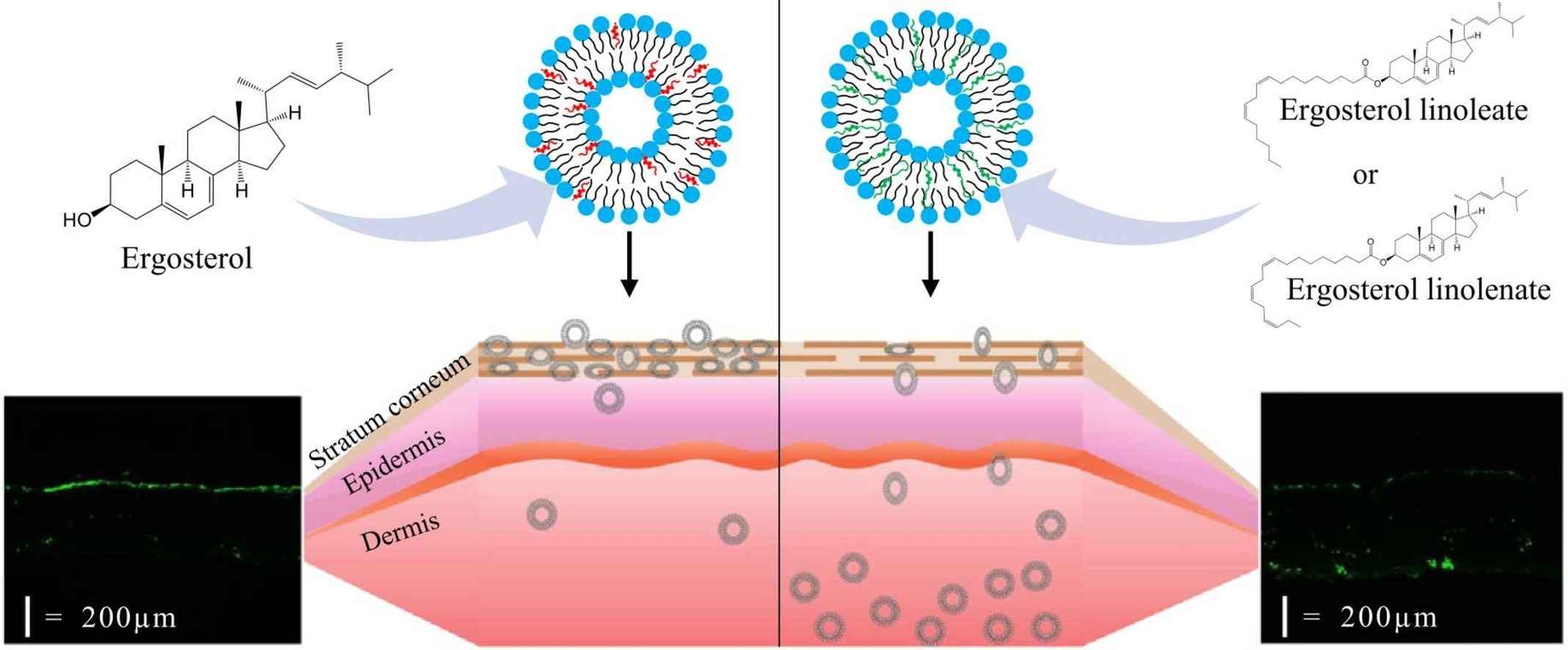Custom Flexible Liposome Service
Inquiry
Self-assembling nanocarriers capable of penetrating the skin's protective barrier have been demonstrated to be effective for non-invasive delivery of substances such as chemicals, drugs, or vaccines into the skin. Flexible liposomes have emerged as a stable combination of lipids and surfactants. With our expertise and technology accumulation in the field of liposomes, the scientific research team at CD Formulation can provide professional solutions for customizing and characterizing diverse flexible liposomes.
What Are Flexible Liposomes?
Cholesterol (Chol) is a component of biofilms, which can affect the physical properties of membranes by interacting with lipids. For example, by changing the fluidity up and down according to the phase transition point of the lipid, the gel or liquid-disordered state of the membrane can be adjusted to a liquid-ordered state over a wide temperature range. In addition, cholesterol will have a cohesive effect on the membrane, increasing the filling density. This increases mechanical strength and reduces material leakage through the membrane. However, cholesterol is known to minimize membrane flexibility. As a result, conventional liposomes containing cholesterol are less permeable to the stratum corneum. The composition of "flexible" liposomal preparations indicates that they consist of a combination of liposomes and micelles. Flexible liposomes are prepared by combining lipids such as phosphatidylcholine (PC) with plasticizers such as surfactants 1-3 or alcohol. Commonly used surfactants include the non-ionic T80 (T80), bile acid salts, and sodium bile acid (NaC).
 Fig.1 Flexible liposomes and the conventional mechanism for their action. (Ogunsola, Oluwatosin, et al., 2012)
Fig.1 Flexible liposomes and the conventional mechanism for their action. (Ogunsola, Oluwatosin, et al., 2012)
Explore Our Custom Flexible Liposome Service
Surfactant Screening
Surfactants play an important role in flexible liposomes, so we help our customers screen the right surfactant types and ratios.
Flexible Liposome Customization
We offer customized services for various flexible liposomes, such as ethosomes, transliposomes, and niosomes, etc.
Liposome Flexibility Assessment
The fluidic nature of liposomes is a pivotal determinant of the quality of soft liposomes and is intricately linked to their effectiveness in skin permeation. Our service aids clients in evaluating the flexibility and fluidity of soft liposomes.
In Vitro Skin Penetration Studies
We utilize confocal microscopy imaging technology and fluorescent lipid labeling to investigate the in vitro effects of skin permeability. Our expertise extends to various animal skin samples, including hairless rat skin, as well as human skin samples used for in vitro testing.
Our Capabilities for Customizing Flexible Liposomes
| Items |
Detailed Information |
| In vitro skin penetration studies |
- Confocal microscopy imaging technique
- Fluorescent lipid labeling technique
- Different animal skin models and 3D models
|
| Surfactant screening |
- We have an independent database, which supports experiment verification after database filtering.
|
| Liposome characterization |
- Physicochemical properties: Particle size, potential distribution, encapsulation rate, drug loading.
- In vitro and in vivo characterization: in vitro release, in vivo distribution, skin penetration, skin Irritation assessment, etc.
|
Our Key Advantages in Customizing Flexible Liposomes
- Advanced formulation technologies. We have many years of experience in the development of liposome formulations, especially for flexible liposomes, creating an independent development platform with a variety of flexible liposome development technologies.
- Transdermal formula database. We specially created the formulation database of flexible liposomes, which includes the ratio and type of surfactant screening database, to provide intelligent screening services for customers.
- Skilled teams. The experts of the research team on flexible liposomes are composed of scientists from various disciplines who have expertise in chemical synthesis, transdermal formulation development, and cosmetic formulation development and have extensive field experience.
Published Data
Technology: Flexible lipid-based drug delivery technique
Journal: Chemistry and Physics of Lipids
IF: 3.4
Published: 2023
Results: In this study, the authors combined ergo-ester (Ergo-Est), which contains unsaturated fatty acids of different sizes and physical properties from Ergo. The authors investigated the effects of Ergo-Est and Ergo on the physical properties of liposomes. They incorporated Ergo, ergo-oleic acid ester (EO 18:1), ergo-linoleic acid ester (EL 18:2), and ergo-linolenic acid ester (ELn 18:3) into liposomes made from egg lecithin and soy lecithin. Ergo-Est had a lesser effect on the mobility of the liposome membrane than Ergo. Skin penetration tests showed that EL 18:2 and ELn 18:3 liposomes penetrated into the dermis, while Ergo liposomes mostly remained in the epidermis. This study confirms that EL 18:2 and ELn 18:3 can serve as effective steroid compounds in flexible liposome formulations.
 Fig.2 Illustration of skin-permeable flexible liposome using ergosterol esters containing unsaturated fatty acids. (Sehyeon Park, et al. 2023)
Fig.2 Illustration of skin-permeable flexible liposome using ergosterol esters containing unsaturated fatty acids. (Sehyeon Park, et al. 2023)
As a global nanoparticle development company, CD Formulation has extensive experience in the development and customization of flexible liposome services. If you need any help, please do not hesitate to contact us.
References
- Ogunsola, Oluwatosin; Kraeling, Margaret, et al. Structural analysis of "flexible" liposome formulations: New insights into the skin-penetrating ability of soft nanostructures. Soft Matter. 2012: 8. 10226-10232.
- Sehyeon Park, Hyung Kwoun Kim. Development of skin-permeable flexible liposome using ergosterol esters containing unsaturated fatty acids. Chemistry and Physics of Lipids. 2023, Volume 250.
How It Works
STEP 2
We'll email you to provide your quote and confirm order details if applicable.
STEP 3
Execute the project with real-time communication, and deliver the final report promptly.
Related Services


 Fig.1 Flexible liposomes and the conventional mechanism for their action. (Ogunsola, Oluwatosin, et al., 2012)
Fig.1 Flexible liposomes and the conventional mechanism for their action. (Ogunsola, Oluwatosin, et al., 2012) Fig.2 Illustration of skin-permeable flexible liposome using ergosterol esters containing unsaturated fatty acids. (Sehyeon Park, et al. 2023)
Fig.2 Illustration of skin-permeable flexible liposome using ergosterol esters containing unsaturated fatty acids. (Sehyeon Park, et al. 2023)
